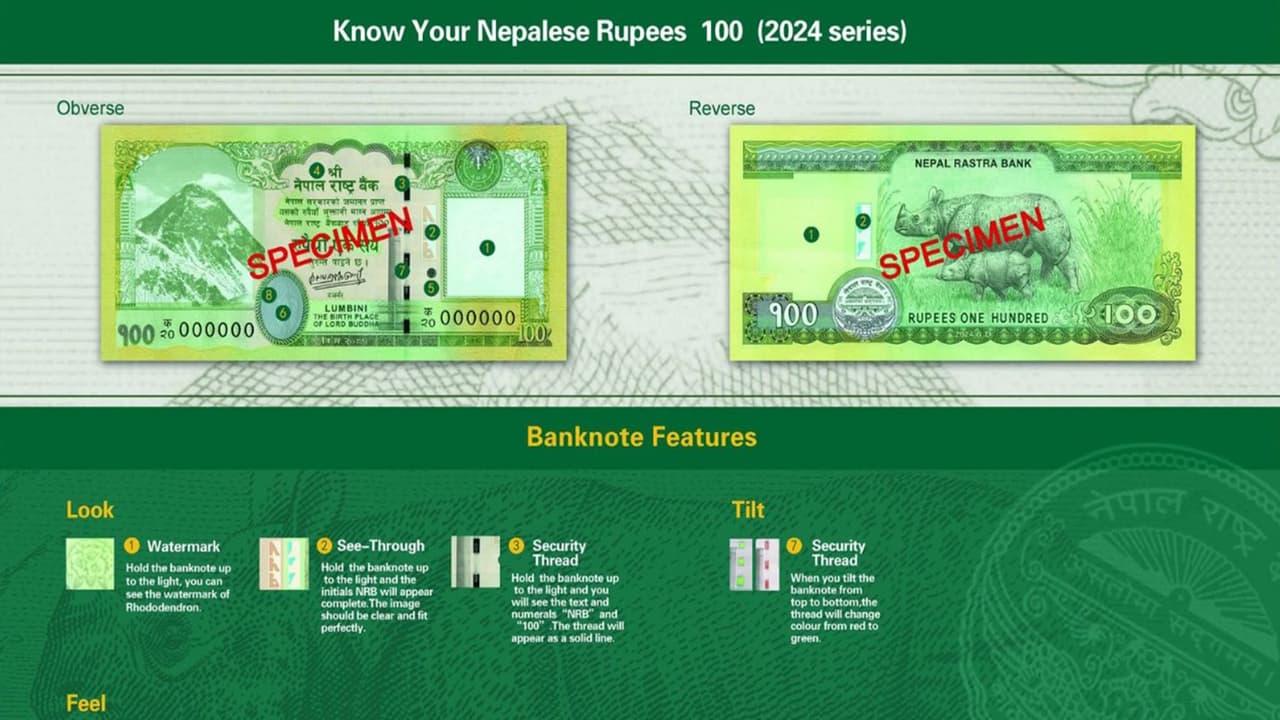Nepal’s new NPR 100 banknote, now in circulation, features an updated map including the disputed territories of Lipulekh, Limpiyadhura, and Kalapani. The note, printed by a Chinese company, includes enhanced security and design elements.
Nepal on Thursday issued its new banknote for the NPR 100, featuring an updated map that includes the disputed territories of Lipulekh, Limpiyadhura, and Kalapani, which came into circulation from today.
New Design and Printing Contract
In a public notice, Nepal Rastra Bank (NRB), the central bank of the Himalayan nation, stated that the newly introduced NPR 100 note was designed to include refined security and identification elements to enhance authenticity and usability. In October last year, the NRB entrusted a Chinese company with printing the new banknotes.
The design of the NPR 100 denomination was approved by the Nepalese Cabinet during a meeting led by the former Prime Minister KP Sharma Oli in May 2024. The contract for printing was awarded to China Banknote Printing and Minting Corporation.
Background of the Controversial Map
On May 20, 2020, Nepal issued a new map incorporating Limpiyadhura, Lipulekh, and Kalapani through a constitutional amendment. Under the Nepal Rastra Bank Act, the NRB is responsible for designing the notes, though any changes to the design or size of the notes require government approval.
Design and Security Features of the New Note
The new note features Mount Everest on the left side and a watermark of the Rhododendron–the national flower of Nepal–on the right. The centre of the note includes illustrations of Nepal’s map and the Ashoka Pillar, while the main design highlights a one-horned rhinoceros with its calf.
Accessibility and Security Enhancements
For visually impaired users, a tactile black dot has been added near the Ashoka Pillar to help identify the denomination by touch. The note retains the colour and size of the previous version and includes a depiction of Maya Devi printed in silver metallic ink inside an oval on the left side. The guarantee text, which assures the government’s payment of NPR 100 to the bearer, remains printed on the note.
For security, the banknote contains a 2-millimetre special security thread that appears red when viewed straight and green when tilted. The note carries the signature of the then-Governor Maha Prasad Adhikari and includes a series number marked “2081” in Nepali numerals at the bottom.
Printing Cost and Volume
The NRB had commissioned the Chinese company to design, print, supply, and deliver 300 million 100-rupee notes. The total printing cost is estimated at approximately USD 8,996,592. At the current exchange rate, this amounts to over NPR 1.2 billion, making the cost of printing each 100-rupee note roughly NPR 4 and 4 paisa.
India’s Stance on Disputed Territories
India’s position on the Kalapani region, including Lipulekh and Limpiyadhura, is that it is part of its territory. This claim is based on India’s interpretation of the Sugauli Treaty of 1816, which defined the border with Nepal based on the Kali River. India maintains that the river originates at the Kalapani village, while Nepal argues it originates further north, at Limpiyadhura. This difference in interpretation leads to the disputed territory.
(Except for the headline, this story has not been edited by Asianet Newsable English staff and is published from a syndicated feed.)
